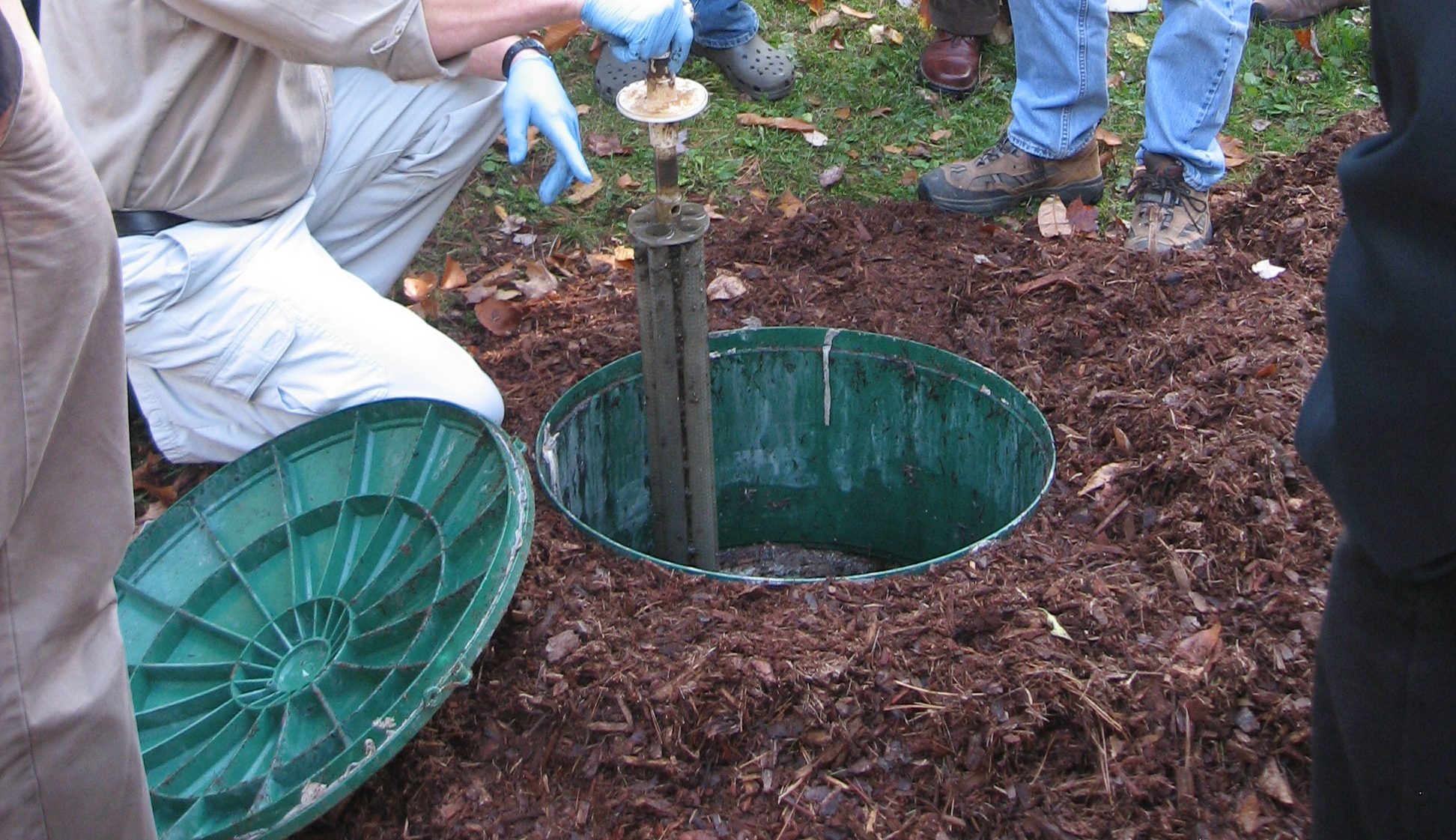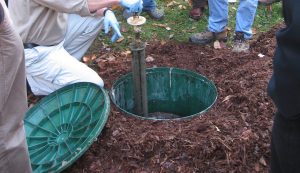Humphrey CP, Iverson G, and O’Driscoll M (2017). Nitrogen Treatment Efficiency of a Large Onsite Wastewater System in Relation to Water Table Dynamics. Clean Soil Air Water, 1700551:1-9, doi:10.1002/clen.201700551.
Abstract
The objective of this study was to determine if the nitrogen treatment efficiency of a large onsite wastewater system (OSW) in the coastal plain of North Carolina was influenced by changes in the elevation of the water table. Groundwater readings including depth to water, pH, temperature, specific conductance, and dissolved oxygen were recorded eight times over a 15–month period (May 2013 to August 2014) encompassing typically “wet” (two sampling events) and “dry” (three sampling events) seasons, and a water table fluctuation of 1.7 m. Groundwater from piezometers (n = 7) near the OSW and septic tank effluent samples were collected for analyses of total dissolved nitrogen (TDN) during each field visit to determine if the TDN treatment efficiency was influenced by the water table elevation. The treatment efficiency of the OSW was directly correlated with wastewater strength (r = 0.882; p = 0.004) and inversely correlated to water table elevation (r = —0.754; p = 0.031). The TDN treatment efficiency at this site decreased with increases in water table elevation, and groundwater TDN concentrations beneath the OSW were typically higher when wastewater concentrations of TDN are higher. Sea level rise and climate change are projected to increase groundwater levels and therefore may have negative effects on water quality adjacent to OSW. Ensuring that OSW are installed with the maximum practical vertical separation to groundwater and setback distances to surface waters, designed with long trenches and oriented perpendicular to the dominant groundwater flow direction will help to maximize TDN treatment.
The published article can be accessed here.




